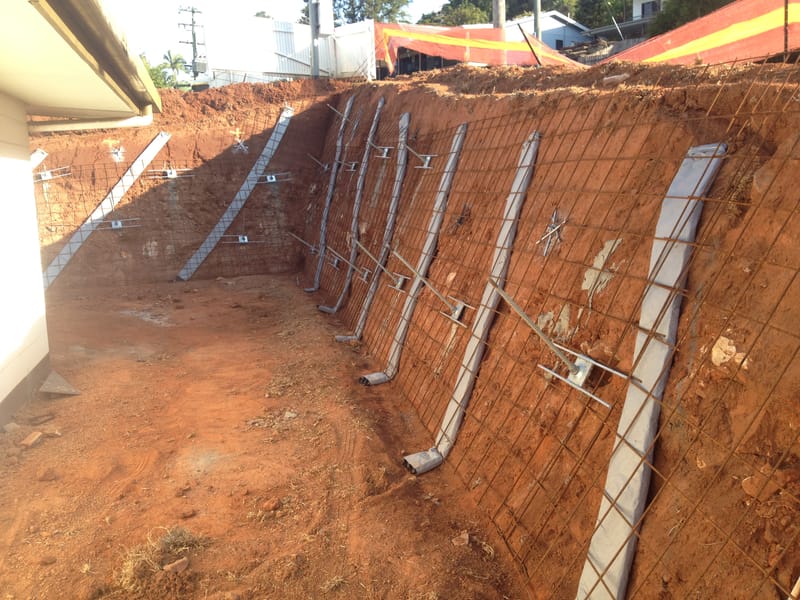Innovative Rock Anchors for Enhanced Construction Support
Innovative rock anchors have increasingly become a focal point in construction design, specifically as tasks require higher stability and effectiveness. With developments in materials and technology, modern anchoring remedies such as grouted and post-tensioned layouts use considerable enhancements in load-bearing capacity and adaptability to varied geological problems. The integration of sophisticated modeling strategies better improves performance optimization, yet the complete capacity of these developments remains to be explored. As we take into consideration the ramifications of smart sensing units and lasting practices, one must ask: just how will these advancements redefine the future of construction assistance?
Development of Rock Anchors
The evolution of rock anchors has substantially changed building and construction techniques over the previous century. As design disciplines progressed, so did the understanding of geological problems and the demand for reliable anchoring systems.
In tandem with advancements in materials science, the development of grouting techniques improved the bond between the support and bordering rock, bring about raised security and durability. The integration of technology into design and screening procedures has actually led to much more precise and reliable installment approaches, additionally enhancing performance. Computer modeling and simulations currently enable engineers to predict support habits under various problems, boosting security and reliability.
Moreover, the expanding emphasis on sustainability within construction techniques has led to innovations in eco-friendly products and techniques for rock anchoring. Overall, the trip of rock supports reflects the building and construction market's adaptation to both technical developments and the raising complexity of modern-day design obstacles.

Types of Modern Rock Anchors
Modern rock anchors come in a selection of kinds, each created to satisfy particular design demands and geological problems. The most usual types consist of grouted anchors, which include inserting a steel tendon right into a drilled opening and filling the area with cement to produce a solid bond with the surrounding rock - Williams Anchors. These anchors are often utilized in applications requiring high tons abilities
Another commonly made use of type is the mechanical support, which counts on mechanical devices to protect the support in position without the requirement for grouting. These supports are favored in circumstances where prompt load-bearing capacity is vital.
In addition, there are post-tensioned anchors, which are installed tensioned to supply security to frameworks such as bridges and keeping wall surfaces. These supports aid to counteract tensile forces acting on the structure.
Advantages of Cutting-edge Layouts
Development in rock anchor style brings many benefits that boost construction efficiency and structural integrity. Modern designs use sophisticated materials and engineering methods to substantially enhance load-bearing abilities. These ingenious anchors are typically built from high-strength steel or composite materials, which not official site only decrease weight but also enhance resistance to corrosion, ensuring longevity and integrity in numerous ecological problems.
Additionally, the use of computer-aided design (CAD) and finite component evaluation (FEA) enables accurate modeling and testing of support efficiency under real-world conditions. This results in supports that can be tailored to particular project needs, optimizing their performance and lowering the requirement for over-engineering, which can be both cost and resource-intensive.

Study in Building And Construction
Real-world applications of ingenious rock support layouts illustrate their transformative influence on building and construction tasks. The supports were purposefully placed to improve load distribution and decrease negotiation, inevitably leading to an extra durable structure.
Another substantial example can be located in the expansion of a transportation passage. Cutting-edge rock anchors were used to safeguard the tunnel walls, enabling much deeper excavation without endangering security. The implementation of grouted rock anchors provided raised tensile toughness, making it possible for workers to progress the job without delays.
In a third instance, a major dam job integrated rock anchors to maintain the embankment. The usage of corrosion-resistant products in the supports made certain lasting sturdiness, reducing maintenance costs and enhancing safety and security standards.
These situation studies show the effectiveness of ingenious rock support layouts in addressing complex engineering obstacles, underscoring their crucial role in modern-day construction methods. The successful results highlight the need for ongoing financial investment in sophisticated anchoring technologies to satisfy evolving building and construction needs.
Future Trends in Rock Anchoring
As building and construction demands develop, the future top article of rock anchoring is poised for significant advancements that will certainly boost safety and security and effectiveness in various applications - Williams Anchors. Emerging technologies, such as wise sensors and real-time monitoring systems, are anticipated to play an important function in the development of more trustworthy securing remedies. These advancements will certainly permit for constant evaluation of support efficiency, enabling timely interventions and decreasing dangers related to structural integrity
Additionally, the integration of lasting materials and practices is coming to be increasingly crucial in the building and construction market. Future rock anchors might include environmentally friendly products that lower ecological impact while maintaining efficiency requirements. In addition, developments in materials scientific research might result in the advancement of high-strength, lightweight anchors that enhance installation procedures and lower labor prices.

Verdict
In verdict, cutting-edge rock supports represent a substantial innovation in building and construction support, resolving the obstacles presented by varied geological conditions. The growth of modern-day designs, consisting of grouted and post-tensioned anchors, boosts load-bearing abilities while promoting security.